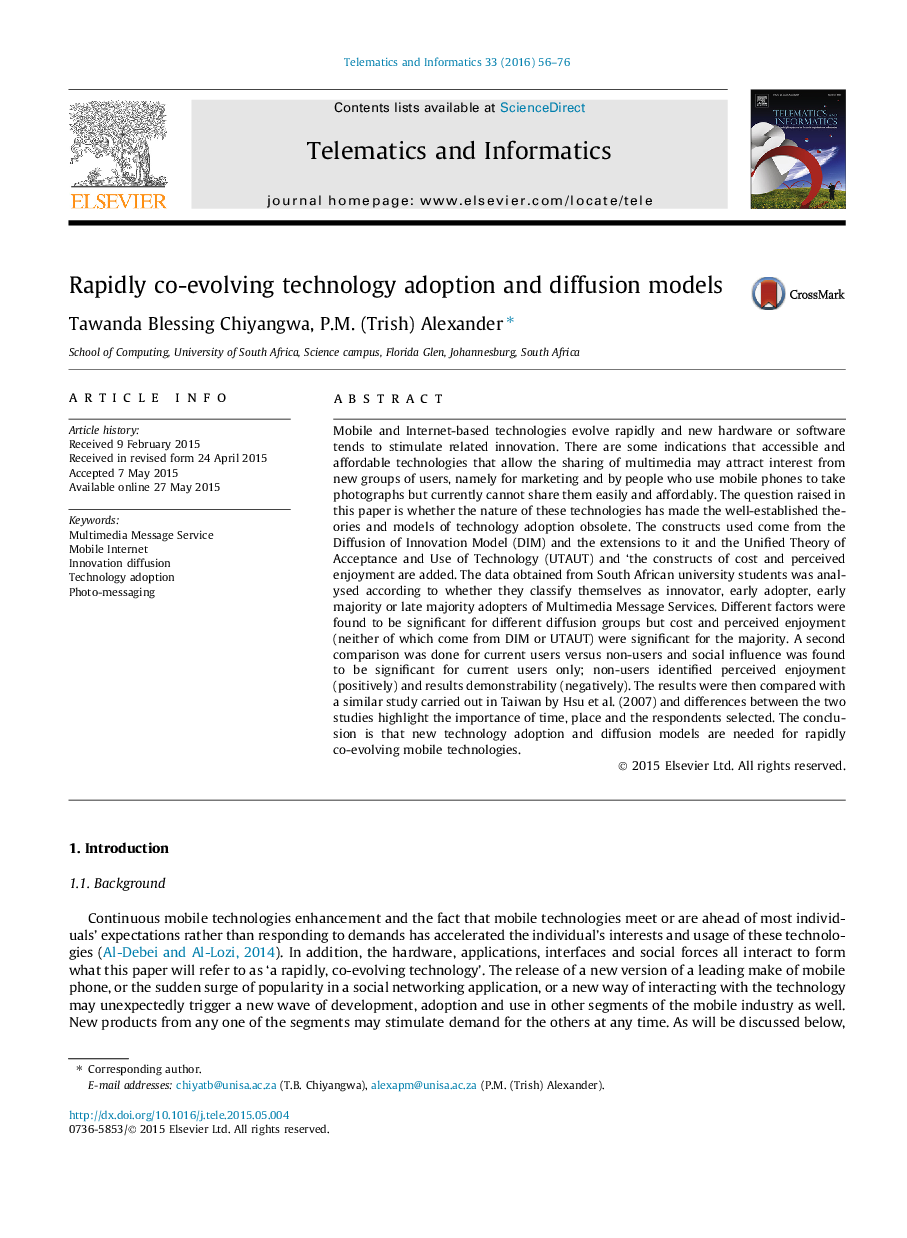| Article ID | Journal | Published Year | Pages | File Type |
|---|---|---|---|---|
| 465307 | Telematics and Informatics | 2016 | 21 Pages |
•South African university students’ MMS adoption does not fit established models.•Major factors are: Perceived enjoyment (positive) and cost (negative).•Social influence seems more important to current users than to non-users.•Results demonstability is perceived to be undesirable by non-users.•Context influences the factors which dominate technology adoption.•New users: Marketing managers; those not currently sharing personal photos.
Mobile and Internet-based technologies evolve rapidly and new hardware or software tends to stimulate related innovation. There are some indications that accessible and affordable technologies that allow the sharing of multimedia may attract interest from new groups of users, namely for marketing and by people who use mobile phones to take photographs but currently cannot share them easily and affordably. The question raised in this paper is whether the nature of these technologies has made the well-established theories and models of technology adoption obsolete. The constructs used come from the Diffusion of Innovation Model (DIM) and the extensions to it and the Unified Theory of Acceptance and Use of Technology (UTAUT) and ‘the constructs of cost and perceived enjoyment are added. The data obtained from South African university students was analysed according to whether they classify themselves as innovator, early adopter, early majority or late majority adopters of Multimedia Message Services. Different factors were found to be significant for different diffusion groups but cost and perceived enjoyment (neither of which come from DIM or UTAUT) were significant for the majority. A second comparison was done for current users versus non-users and social influence was found to be significant for current users only; non-users identified perceived enjoyment (positively) and results demonstrability (negatively). The results were then compared with a similar study carried out in Taiwan by Hsu et al. (2007) and differences between the two studies highlight the importance of time, place and the respondents selected. The conclusion is that new technology adoption and diffusion models are needed for rapidly co-evolving mobile technologies.
